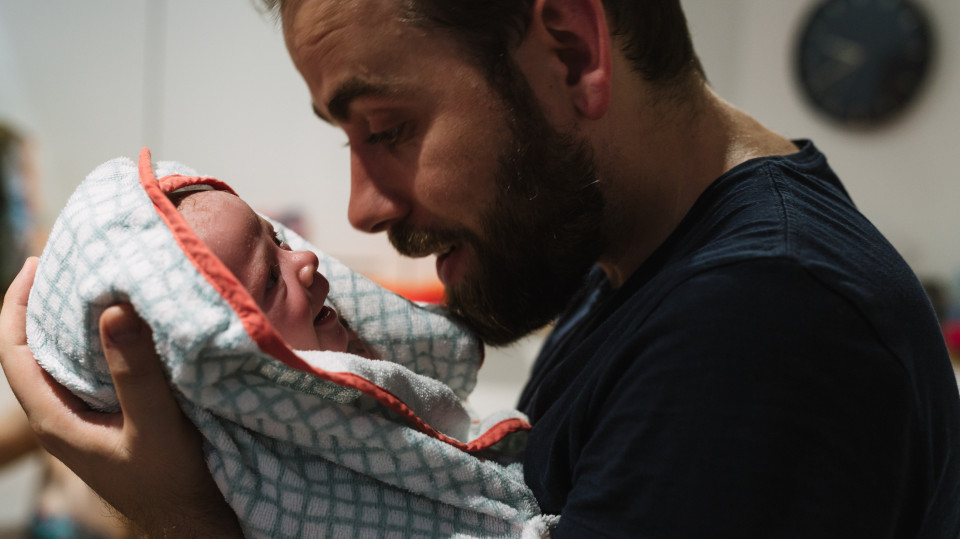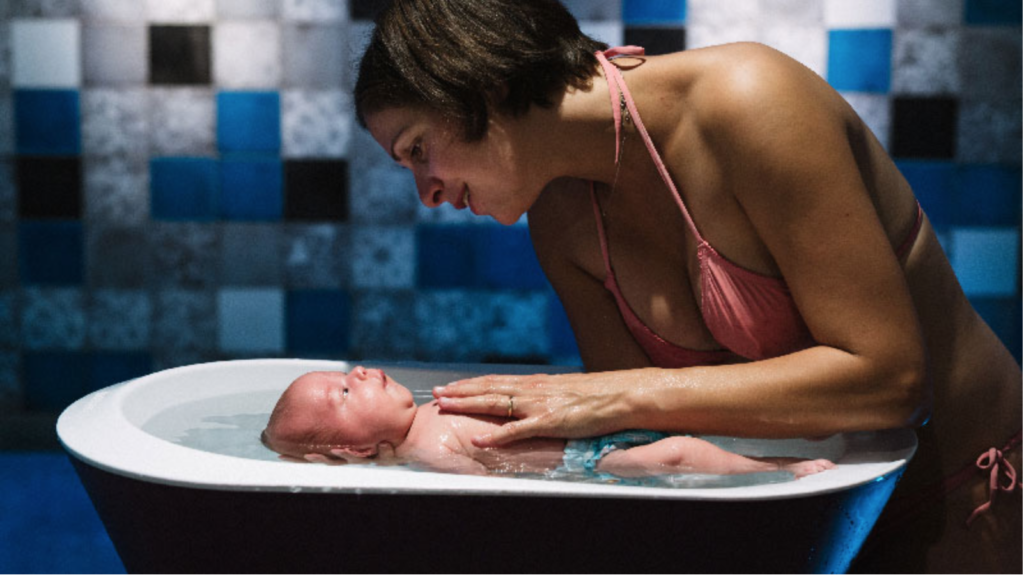
This blog is a part of our weeklong, daily blog during Brazelton Baby Communication Week 2023 #BabyCommunicationWeek23 #AmazedByBabies #brazeltonuk
Within seconds of being born or raised out of the water if they were born in water, babies take their first breath. This adaptation to the drastic change in their environment is dramatic but follows a subtle and complex orchestration of inbuilt physiological responses. There is no need to cause healthy pink newborns to cry – as it was done in the past by holding them upside down and spanking their bottoms – to help them breathe. The fluid begins to drain from their lungs and is replaced by oxygen. Then the lungs begin to work all on their own. When exposed to gravity, bright lights and hard surfaces, newborns often respond with a Moro reflex, a startle and a gasp that reveal their shock at sensing such a different environment after months in the dark containing space of the womb.
As Frederick Leboyer put it, we also ‘feed’ babies with touch
Soft body contact with maternal (and paternal) bodies mediates human earthlings’ adaptation. Like Harlow’s experimental monkeys who preferred to cling to a furry mannequin rather than to hang on to a wire model dispensing delicious milk, babies crave close connection with warm bodies. As Frederick Leboyer put it, we also ‘feed’ babies with touch. In most cultures, the first bath has importance beyond making newborns clean. It marks the transition from amniotic fluid to water, with similarities and differences. Each bath refreshes memories of uterine life. When babies are taken out, their bodies are toned anew for land life.
Due to dominant preoccupations with hygiene and safety, the importance of baths to facilitate newborns’ adaptation to their new environment can be forgotten. Even if research on pre-birth memory is not yet conclusive, most newborns relax spectacularly in warm water, provided that their caregivers are handling them freely enough. For this, babies need to be sufficiently immersed and minimally supported. Tight holding restricts their experience of the aquatic environment.

The bath is a multisensory adventure that beats any stimulation offered in decorated baby corners. Babies are massaged all over as they move in water, surprising themselves with kicks and splashes. They lick the water – the ‘gag reflex’ protects their lungs if they inadvertently go under. Sounds are different in the bath, more muffled if babies’ ears are under the surface, which usually does not seem to bother them.
In the bath, babies are held away from caregivers’ bodies and then lifted close to them again when they are taken out. Even if warm towels are ready at hand, this involves a tremendous adaptation of senses, proprioception -how the body feels in space- and awareness on the babies’ part. Parents also feel reunited with their babies after what may feel like a long journey in the water world.
At Birthlight, we draw new parents’ attention to the multiple facets of the bath to observe and stimulate babies’ impressive powers of adaptation with positive reinforcing enjoyable sensations leading to self-confidence.
As newborns awake to the world around them and their range of sensations expands, baths in small baby tubs or shared bathtubs- provide a continuity of experience, allowing babies to
continue exploring contrasts between aquatic and dry land surroundings in more active ways.
Whether caregivers are interested in the possible aquatic origin of early humans , bathing their babies mindfully helps them to be patient observers, watching their babies without distractions as they support them in the water. There is no need to do anything else than relaxing in this supporting role. Some babies might demonstrate an impressive ability to float or engage in vigorous amphibian leg movements. Others will move a little and pause, taking time to gauge their comfort zone. Rather than claiming teachers or facilitators’ roles, the bath helps parents to become witnesses, learning to observe and register day to day changes, good and less good days, in interaction as their babies develop.
- Harry Harlow, The wire mother experiment, 1958. www.simplypsychology.org › harlow-monkey
- Birthlight has pioneered the practice of nurturing baths for newborns (birthlight.com/birthlight–aquatic–nurture/)
- Odent, Michel. The Birth of Homo, the Marine Chimpanzee. Pinter& Martin 2017.